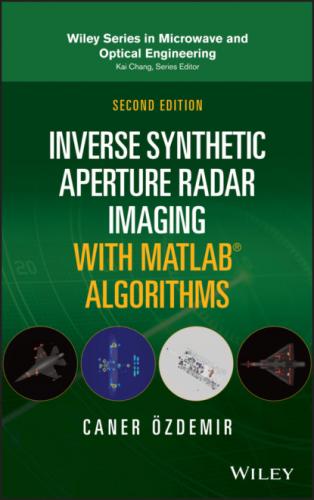1.2.3 Frequency Shifting
If the time signal is multiplied by a phase term of
(1.7)
1.2.4 Scaling
If the time signal is scaled by a constant a, then the spectrum is also scaled with the following rule
(1.8)
1.2.5 Duality
If the spectrum signal G(f) is taken as a time signal G(t), then, the corresponding frequency domain signal will be the time reversal equivalent of the original time domain signal, g(t) as
(1.9)
1.2.6 Time Reversal
If the time is reversed for the time‐domain signal, then the frequency is also reversed in the frequency domain signal.
(1.10)
1.2.7 Conjugation
If the conjugate of the time‐domain signal is taken, then the frequency‐domain signal conjugated and frequency‐reversed.
(1.11)
1.2.8 Multiplication
If the time‐domain signals, g(t) and h(t) are multiplied in time, then their spectrum signals G(f) and H(f) are convolved in frequency.
1.2.9 Convolution
If the time‐domain signals, g(t) and h(t) are convolved in time, then their spectrum signals G(f) and H(f) are multiplied in the frequency domain.
1.2.10 Modulation
If the time‐domain signal is modulated with sinusoidal functions, then the frequency‐domain signal is shifted by the amount of the frequency at that particular sinusoidal function.
(1.14)
1.2.11 Derivation and Integration
If the derivative or integration of a time‐domain signal is taken, then the corresponding frequency‐domain signal is given as below.
(1.15)
1.2.12 Parseval's Relationship
A useful property that was claimed by Parseval is that since the FT (or IFT) operation maps a signal in one domain to another domain, their energies should be exactly the same as given by the following relationship.
(1.16)
1.3 Time‐Frequency Representation of a Signal
While the FT concept can be successfully utilized for the stationary signals, there are many real‐world signals whose frequency contents vary over time. To be able to display these frequency variations over time; therefore, joint time–frequency (JTF) transforms/representations are being used.
1.3.1 Signal in the Time Domain
The term “time domain” is used while describing functions or physical signals with respect to time either continuous or discrete. The time‐domain signals are usually more comprehensible than the frequency‐domain signals since most of the real‐world signals are recorded and displayed versus time. Common equipment is to analyze time‐domain signals is the oscilloscope. In Figure 1.1, a time‐domain sound signal is shown. This signal is obtained by recording of an utterance of the word “prince” by a lady. By looking at the occurrence instants in the x‐axis and the signal magnitude in the y‐axis, one can analyze the stress of the letters inside the word “prince.”
1.3.2 Signal in the Frequency Domain
The term “frequency domain” is used while describing functions or physical signals with respect to frequency either continuous or discrete. Frequency‐domain representation has been proven to be very useful in innumerous engineering applications while characterizing, interpreting, and identifying signals. Solving differential equations, analyzing circuits, signal analysis in communication systems are few among many others where frequency‐domain representation is much more advantageous than the time‐domain representation. The frequency‐domain signal is traditionally obtained by taking the FT of the time‐domain signal. As briefly explained in Section 1.1, FT is generated by expressing the signal onto a set of basis functions, each of which is a sinusoid with the unique frequency. Displaying the measure of the similarities of the original time‐domain signal to those particular unique‐frequency bases generates the Fourier transformed signal or the frequency‐domain signal. Spectrum analyzers and network analyzers are the common equipments to analyze frequency‐domain signals. These signals are not as quite perceivable when compared to time‐domain signals. In Figure 1.2, the frequency‐domain version of the sound signal in Figure 1.1 is obtained by using the DFT operation. The signal intensity value at each frequency component can be read from the y‐axis. The frequency content of a signal is also called the spectrum of that signal.
Figure 1.1 The time‐domain signal of “prince” spoken by a lady.
